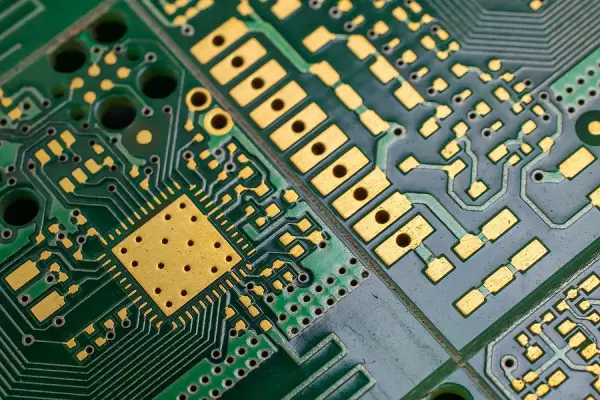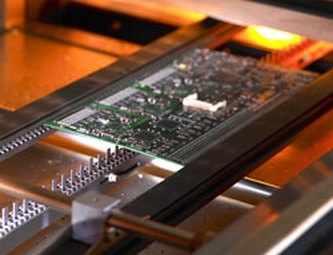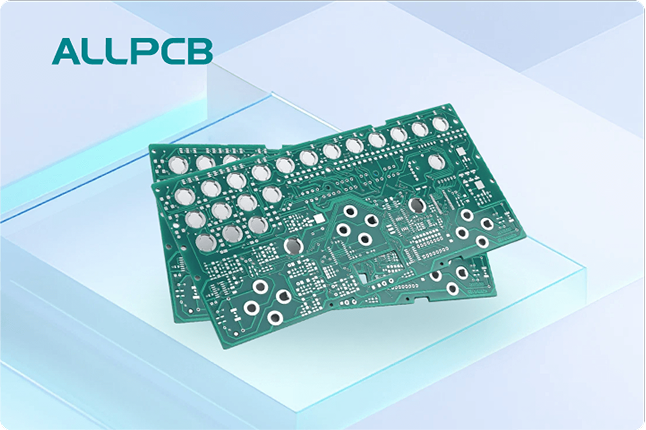If you're designing a printed circuit board (PCB), understanding solder mask expansion rules is key to ensuring manufacturability and reliability. Solder mask expansion refers to the slight enlargement of the solder mask opening around pads and vias to account for manufacturing tolerances and prevent issues like misalignment or insufficient coverage. But how do you set the right expansion values, and what impact do they have on pad clearance, via coverage, solder mask slivers, and registration? In this comprehensive guide, we'll dive deep into these concepts, offering practical tips and design for manufacturability (DFM) guidelines to help you create high-quality PCBs with fewer production hiccups.
What Is Solder Mask Expansion and Why Does It Matter?
Solder mask expansion is the process of increasing the size of the solder mask layer openings around copper pads and vias beyond their actual dimensions. This expansion creates a small buffer zone to accommodate potential misalignments during the manufacturing process. Without proper expansion, you risk exposing copper traces or creating weak points that could lead to solder bridging, corrosion, or electrical shorts.
In PCB design for manufacturability (DFM), setting the correct solder mask expansion value is critical. Too little expansion can result in the solder mask covering part of the pad, reducing the area available for soldering. Too much expansion, on the other hand, can expose unnecessary copper, increasing the risk of shorts or environmental damage. Typically, expansion values range from 2 to 5 mils (0.05 to 0.13 mm) depending on the PCB fabrication capabilities and design requirements.
In the following sections, we'll explore how solder mask expansion ties into key DFM aspects like pad clearance, via coverage, solder mask slivers, and registration issues. Let's break it down step by step.
The Role of Solder Mask Expansion in Pad Clearance
Pad clearance refers to the distance between the edge of a copper pad and the surrounding solder mask. Proper pad clearance ensures that the pad is fully exposed for soldering while preventing the solder mask from interfering with component placement or solder flow. Solder mask expansion directly affects this clearance.
For most standard designs, a solder mask expansion of 3 to 4 mils (0.076 to 0.1 mm) is recommended for surface mount pads. This value provides enough clearance to account for manufacturing tolerances, which can vary by up to ±2 mils (0.05 mm) in typical fabrication processes. For through-hole pads, a slightly larger expansion of 4 to 5 mils (0.1 to 0.13 mm) may be necessary due to the larger pad sizes and potential for greater misalignment during assembly.
Without adequate pad clearance, you might face issues like incomplete solder joints or difficulty in placing components. To avoid this, always check your fabricator’s capabilities and adjust the expansion rules in your PCB design software accordingly. Many design tools allow you to set global or per-pad expansion values to match specific requirements.
Practical Tip for Pad Clearance
When working on high-density designs with fine-pitch components (e.g., 0.5 mm pitch or less), reduce the solder mask expansion to around 2 mils (0.05 mm) to prevent exposing adjacent pads. This minimizes the risk of solder bridging during reflow soldering, especially for components like QFNs or BGAs where pads are closely spaced.
Via Coverage: Balancing Protection and Manufacturability
Via coverage is another critical area influenced by solder mask expansion rules. Vias, which are small holes that connect different layers of a PCB, can be either tented (fully covered by solder mask), plugged, or left open. The choice depends on the design’s purpose and manufacturing constraints.
For tented vias, a negative solder mask expansion is often used, meaning the solder mask opening is smaller than the via’s outer diameter. A common value is -2 to -3 mils (-0.05 to -0.076 mm), ensuring the via is completely covered to prevent solder wicking or contamination during assembly. However, if the via is too small (e.g., less than 0.3 mm in diameter), tenting might not be feasible due to manufacturing limitations, and you may need to leave it open or plug it with a non-conductive material.
For vias that need to remain open, such as test points or thermal vias under components, a positive solder mask expansion of 3 to 5 mils (0.076 to 0.13 mm) ensures the via is fully exposed. This is particularly important for thermal vias, as insufficient exposure can hinder heat dissipation, potentially leading to component overheating.
Via Coverage Challenges
One common issue with via coverage is incomplete tenting due to misalignment of the solder mask layer. If the expansion value is not set correctly, or if the fabricator’s registration tolerance is poor (e.g., exceeding ±3 mils or 0.076 mm), the via might be partially exposed, leading to reliability issues. To mitigate this, always confirm the minimum via size and tenting capabilities with your manufacturing partner.
Minimizing Solder Mask Slivers for Better Reliability
Solder mask slivers are thin, narrow sections of solder mask between adjacent pads or traces. These slivers can cause manufacturing defects if they are too small, as they may peel off, crack, or fail to adhere properly during the application process. Solder mask expansion plays a significant role in preventing slivers by ensuring sufficient spacing between mask openings.
According to industry standards like IPC-7351, the minimum solder mask sliver width should be at least 4 mils (0.1 mm) to ensure manufacturability. If the expansion value is too large, the gap between mask openings narrows, creating slivers that are prone to breaking. For example, if two pads are spaced 10 mils (0.25 mm) apart and the solder mask expansion is set to 5 mils (0.13 mm) on each side, the resulting sliver would be only 0 mils wide, effectively eliminating the mask between them and exposing copper.
To avoid this, reduce the expansion value or increase the spacing between pads in high-density areas. Many PCB design tools include design rule checks (DRC) for minimum solder mask sliver width, allowing you to catch potential issues before sending the design to fabrication.
Design Tip for Solder Mask Slivers
For designs with tight spacing, consider using a solder mask defined (SMD) pad structure, where the mask opening is larger than the copper pad, reducing the risk of slivers. However, balance this with the need for sufficient mask coverage to protect traces from environmental factors.
Addressing Solder Mask Registration Issues
Solder mask registration refers to the alignment of the solder mask layer with the underlying copper features. Misregistration occurs when the mask is offset due to manufacturing tolerances, potentially exposing copper or covering parts of pads that should be exposed. Solder mask expansion helps mitigate registration issues by providing a buffer zone around pads and vias.
Typical registration tolerances for solder mask alignment are around ±3 to ±5 mils (±0.076 to ±0.13 mm), depending on the fabrication process. If your expansion value is too small (e.g., 1 mil or 0.025 mm), even a slight misalignment of 3 mils (0.076 mm) could result in the mask encroaching on the pad, reducing the solderable area. Conversely, an overly large expansion (e.g., 7 mils or 0.18 mm) might expose too much copper, increasing the risk of shorts or oxidation.
To address registration challenges, set expansion values based on your fabricator’s stated tolerances. For high-precision designs, such as those for aerospace or medical applications, consider working with a manufacturer that offers tighter registration control (e.g., ±2 mils or 0.05 mm) and adjust your design rules accordingly.
Preventing Registration Errors
One practical way to minimize registration errors is to avoid placing critical features too close to the edge of the PCB, where alignment is often less precise. Additionally, include alignment fiducials in your design to help the manufacturer align the solder mask layer during production.
Best Practices for Setting Solder Mask Expansion in DFM
Now that we’ve covered the key aspects of solder mask expansion, let’s summarize some best practices to incorporate into your PCB design workflow for optimal manufacturability:
- Consult Your Fabricator: Always check the recommended solder mask expansion values and tolerances with your manufacturing partner. Their equipment and processes will dictate the ideal settings.
- Use Design Rule Checks (DRC): Set up DRCs in your PCB design software to catch issues like insufficient pad clearance, narrow solder mask slivers, or improper via coverage before production.
- Balance Expansion Values: Aim for a solder mask expansion of 2 to 5 mils (0.05 to 0.13 mm) for most designs, adjusting based on component density and via requirements.
- Test High-Density Designs: For boards with fine-pitch components or tight spacing, create test layouts to verify that your expansion settings prevent slivers and shorts.
- Account for Environmental Factors: If your PCB will be exposed to harsh conditions, prioritize larger mask coverage by reducing expansion to protect copper from moisture and corrosion.
Common Solder Mask Expansion Mistakes to Avoid
Even experienced designers can make mistakes when setting solder mask expansion rules. Here are some pitfalls to watch out for:
- Ignoring Fabricator Guidelines: Using generic expansion values without considering your manufacturer’s capabilities can lead to misalignment or coverage issues.
- Overlooking Via Tenting Needs: Failing to set a negative expansion for tented vias can result in exposed vias, increasing the risk of solder wicking.
- Neglecting Sliver Checks: Not verifying minimum solder mask sliver width can cause manufacturing defects, especially in dense layouts.
- Uniform Expansion for All Features: Applying the same expansion value to pads, vias, and traces without customization can create problems in mixed-density designs.
Conclusion: Mastering Solder Mask Expansion for Reliable PCBs
Understanding and applying solder mask expansion rules is a fundamental part of PCB design for manufacturability. By carefully setting expansion values, you can ensure proper pad clearance, effective via coverage, minimal solder mask slivers, and accurate registration. These factors directly impact the reliability and performance of your final product, making it essential to prioritize DFM guidelines during the design phase.
Whether you're working on a simple prototype or a complex multilayer board, take the time to tailor your solder mask expansion settings to your specific design needs and manufacturing capabilities. With the right approach, you can avoid common pitfalls and deliver PCBs that meet both functional and production requirements.
 ALLPCB
ALLPCB







